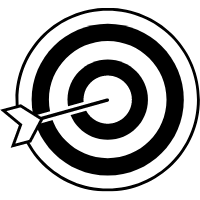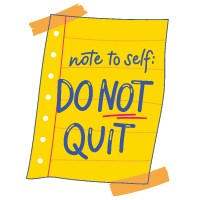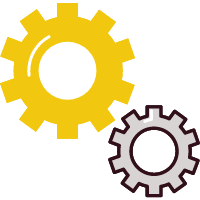Software developers work on designing, coding, testing, and delivering the software we use every day. And whatever that developer's particular specialty, they know a lot about a lot of things – which means they should share that knowledge.
Publishing articles and creating video content are great ways to share what we learn as developers. You may have your own blog or you may write for a publication. In either case, you should follow specific processes to write well and feel great about it.
This article will cover the fundamentals of blogging to help you write great articles while not dropping the ball as a developer.
TL;DR
This tweet summarizes most of the points at a high level. However, we will talk about some real-life experiences and learning how to blog in more detail. Please keep reading and enjoy.
Quality content writing is a process. It needs,
— Tapas Adhikary (@tapasadhikary) April 3, 2021
👉 Planning
👉 Content Research
👉 Review(s)
👉 Time to publish
👉 Most importantly, the intent to write.
It's perfectly fine to take time to deliver a quality content. No rush.
Know your purpose

We all need a purpose when we start something and the motivation to continue it. The intent behind our actions and our motivation may be different for everyone. You need to find your intent or purpose that explains why you want to start a blog or share your content.
In most cases, the simple answer could be Passion. Fair enough! It could also be a business strategy, or perhaps you want to teach others. Maybe you want to keep learning – practically anything that gets you started will work.
As a developer, we learn something new all the time. It is close to impossible to memorize every piece of what we've learned. When we document those lessons and bits of information, we might as well make that knowledge reusable.
This is why writing an article about something you've learned recently is an excellent idea, and gives you very clear intent for your progressive documentation.
💡 Tips: Create a private GitHub repo with a markdown file. When you encounter something new, add a note about it (with code, if needed) in the file.
The contents of this file will then become an excellent source for your future articles. I maintain a file called TIL_2021.md (Things I Learned in the year 2021) for the same purpose.
When I decided on blogging, I intended to learn by sharing knowledge. If you want to learn something deeply, start teaching it. Blogging is a great way to do that.
Find Your Motivation

Motivation can do wonders when you have it, but it can be hard to continue without it. As a content creator, your biggest motivation is likely to hear feedback from your readers. Positive feedback and constructive criticism always help you improve the content you create.
But there is a problem. Initially, you may not have very many readers to give you feedback. The chances of disappointment are higher if you are an individual blogger. So it helps to have a lot of self-motivation to sustain and continue your work.
Remember – do not give up, stay motivated. As a developer, you have plenty to learn, share, and write about.
💡 Tips: If you want to start blogging as a developer, the developer community is helpful to stay connected and motivated. There are many incredible communities around like Hashnode, Dev.to, Codenewbie, Hackernoon, freeCodeCamp, GirlsWhoCode, and many more.
Do Your Research

In blogging, content rules all. As developers, we may have multiple ideas, problem-solving steps, and new learnings we want to get down. But the most crucial part is being able to turn it into quality content. It's usually necessary to take the time required to research your topic thoroughly.
Let me take an example of content research here. Say you have solved a problem using Linked List, and it is the first time you have used one. You are so excited that want to share what you've learned. Here are a few points to consider:
- You need to understand
Linked Listgenerically and beyond the context of the problem you have solved. - You need to understand both the pros and cons of using
Linked List. - You need to set up a few examples that demonstrate how best to use it.
- You need to make sure you explain the way you've solved the problem clearly so people can use it in their own use cases.
💡 Tips: Once you figure out what you need to know, you can learn about it from any well-established resource. Perform a search wionth Google, Quora, Reddit, and so on. Stackoverflow is another excellent platform to check for info on the topic as well.
Make sure you note down what you learn as you make progress. These notes will eventually turn into the article you write and publish.
Plan the Content Structure

Once you have your content research done, the next thing is to plan the structure of the article. Excellent article content can go ignored by readers if you have an inadequate and messy content structure.
Here are a few tips to help you structure your article content in a readable way:
- Title: A compelling title can help influence many readers to visit your article. No matter what, people hardly miss reading the title of the article. Keeping it catchy will increase the traffic to your content.
- Cover Image: A relevant cover image makes your article very attractive. When you share your articles on social media like Twitter, Linkedin, or Reddit, a creative cover image may attract your readers.
- Introduction: this section describes the content at a high level. It can be an initial paragraph or a Tl;DR section explaining what you plan to cover in the article.
- Headings and Sub Headings: You should break the content into logical sub-topics. To do that, create sections and provide relevant headings and sub-headings. For example, I have created multiple sections with headings like
Know Your Purpose,Find Your Motivation, and so on in this article. - Graphics: "A picture is worth a thousand words." This is often true, so think of supporting your content with some graphs, pictures, and so on.
- Summary: A summary section at the end helps your reader recap what they have learned from the article so far. It is also helpful for a returning reader to recollect the content by going through the summary.
- Important Links: You may want to end your article with a list of related links for further reading. You can use the same section to list the links to your previously published articles as well.
💡 Tips: Try to use a consistent content structure for your articles. Your readers will get used to it and find it easy to follow.
Writing Tools

Creating quality content takes time. You can make yourself a productive and efficient content creator by using some of the tools available for free. Here are a few that you may find helpful,
⚒️ Notion: this tool can help you manage your personal and professional work TODOs in an efficient manner. Anytime an article idea occurs to you or you solve an interesting problem, create a task in the tool. You can prioritize, schedule, and assign tasks with ease.
Comments
Post a Comment